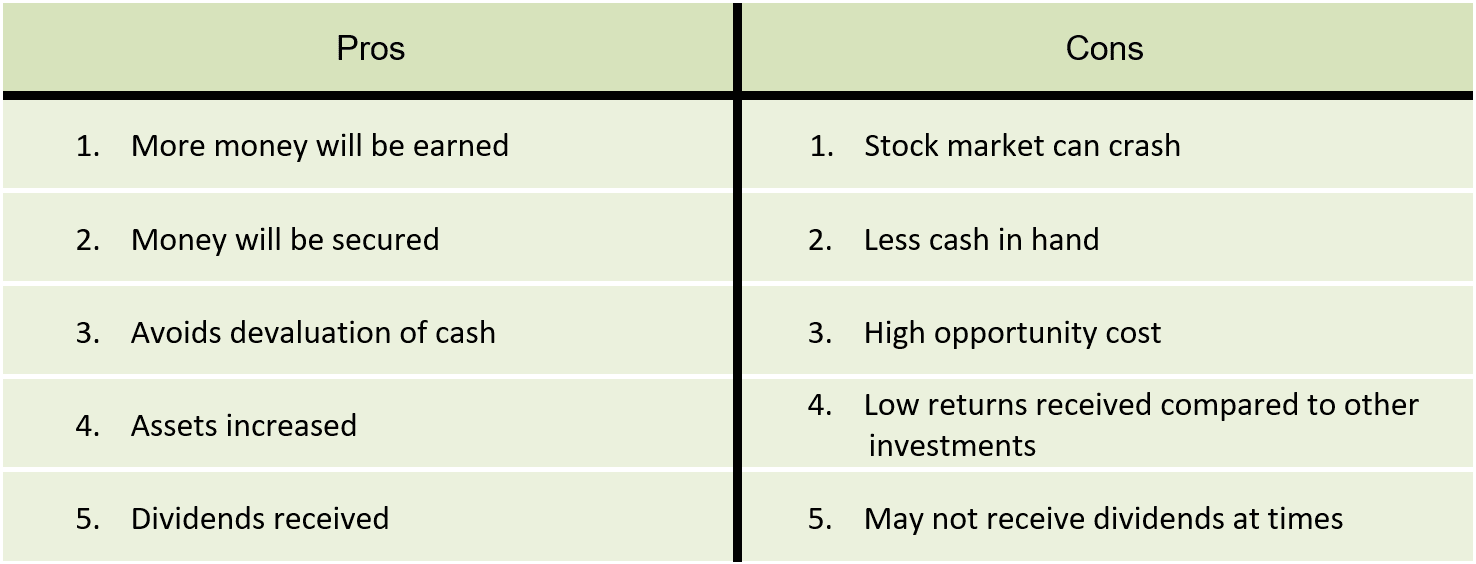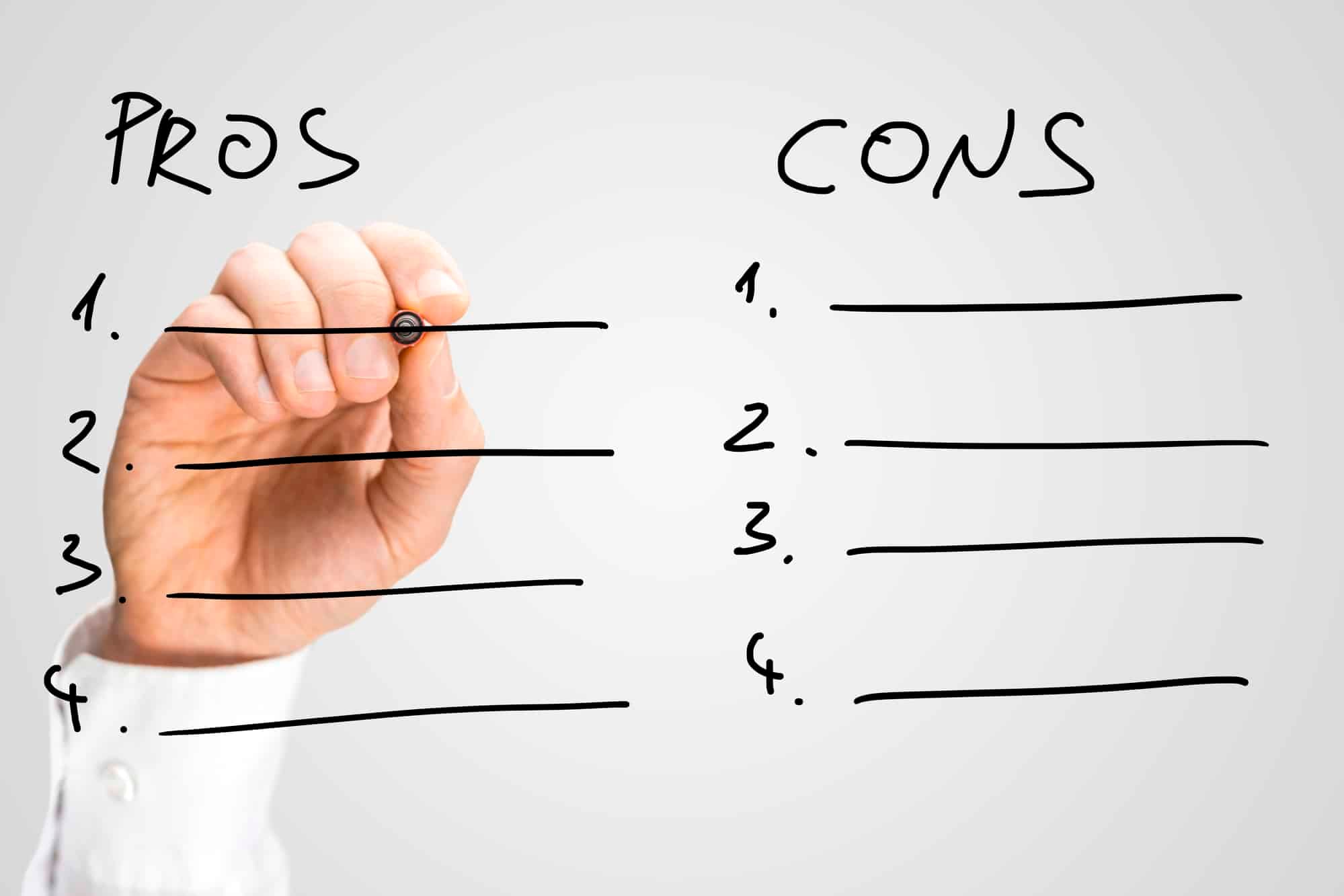Imagine you work for a company, and your boss doesn't like you; that might be relatable. Anyways coming back on point, you already know that your boss doesn't admire you, but you want a one-month paid leave to go on a once-in-a-lifetime adventure trip.
Would you walk up to your boss and ask for the paid leaves or miss the adventurous trip just because you are scared of the consequences?
In life, we all have to deal with similar situations where we have to make tough decisions. These decisions can be of any type. For example, they might be business related or any other type. However, the question that arises is how to make such decisions.
Don't worry; after reading this article, you'll be able to make the most challenging decisions of your life most easily. Today, we will tell you about a tool to ease decision-making. This tool is called the Pros and Cons list.
The pros and cons list highlights the advantages and disadvantages associated with decisions. It sheds light on both possible good and bad outcomes of a decision. The pros and cons list helps us analyze and then decide whether to take the decision or not.
The pros and cons list is a tool for you to help you think through your decision. It helps you see the benefits and costs of your decision and when and how good things might happen. It can also help you recognize possible risks down the road.
A visual representation of advantages on one side and disadvantages on the other makes the decision-making process easy. That's why many people prefer constructing a pros and cons list before making daily life decisions.
The founding father of the US, Benjamin Franklin, is known for using the pros and cons list to make different decisions in his life.
Let's recall the example given at the start of this article to get a better idea about the pros and cons list and its use. Knowing your boss doesn't like you, would you still ask your boss for a paid leave?
In such a case, constructing a pros and cons list can be beneficial. It will first make you state all the possible advantages you'll get for asking about the leave in one column. For example, the most significant advantage would be that you can actually get paid leave.
After that, you'll write down all the disadvantages of requesting paid leaves. For example, you can get fired, or the boss might insult you. After weighing both these advantages and disadvantages, you'll be able to conclude whether to ask for paid leave or not.
After discussing the pros and cons list in detail, let's proceed further and see how it is constructed.

How to Make a Pros and Cons List Template
Constructing a pros and cons list template is very easy. It may sound complicated, but even a seven-year-old can form a pros and cons template. However, there are a few steps that are to be followed to construct one.
Let's proceed further and see the steps required to make the pros and cons list template in detail.
Make the Chart
The first step in constructing the pros and cons list template is to mention the decision for which you list the pros and cons. The decision can be of any nature. For example, it can be "investing money in stocks."
After stating the decision in question, make two columns. Label the left column as pros and the right column as cons. The structure of the pros and cons list template can also be referred to as the T-chart due to its format.
Select the Method of Filling the Columns
Before stating the pros and cons, selecting the method to add the pros and cons in the columns is essential. Some people prefer filling the column alternatively, for example, adding one pro and one con. Whereas others state all the pros first and then all the cons.
It depends on you, whatever method you find comfortable. However, the first method will create a balanced template with an equal number of pros and cons. On the other hand, the second method can make your preference visible since one of the columns may have more reasons.
List the Pros
After the T-chart has been constructed, start filling the pros column with all possible positive outcomes if the decision is taken. Some of the pros will come to your mind immediately.
However, you'll have to brainstorm to find more pros. While brainstorming, you can use the mind mapping technique to represent your thoughts visually. Using mind mapping can help in exploring more cons associated with the decision.
Moreover, asking questions such as "How will this benefit me" and "What could you accomplish" can help you list more pros.
For example, the pros of investing money in stocks are that it'll make you earn more money, invested money is safe, it's better than keeping cash, etc.
List the Cons
After listing the pros, move to the second column and state the cons. The column representing cons will consist of disadvantages associated with the decision. Similar to the pros, some cons will immediately pop up in your mind. However, brainstorming is required to list the cons further.
The cons of our investment in stocks would be that all the money invested can be lost, the stock market can crash, low dividends, etc.
Adding Weights
After listing the cons, your pros and cons list template will be completed. Now add the weights to each one of the pros and cons according to how much importance they hold. After that, you can analyze and weigh both pros and cons and decide what decision to make.
Following, we have constructed the pros and cons list template for deciding whether to invest money in stocks. This example will help you understand the pros and cons template in a better way.

Advantages of Using Pros and Cons List Template
The pros and cons technique is quite famous since there are many advantages of using this technique. In this section, we will discuss the reasons why it is beneficial to use the pros and cons list for decision-making.
Decision Making is Improved
Constructing a pros and cons list template improves decision-making since its process includes brainstorming and then listing down the pros and cons. As a result, no critical factor is missed.
Moreover, as discussed earlier, weights are assigned to pros and cons according to their importance. This mechanism improves decision-making and helps the decision maker in making better decisions.
Helps in Making Decisions Objectively
The pros and cons method increases objectivity. When the decision maker goes through the process of listing pros and cons, it makes the decision maker see the situation more objectively, without the influence of emotions. As a result, the decision maker can make decisions objectively, not emotionally.
Easy to Use
One of the most significant advantages of the pros and cons is its simplicity. Since there are no complexities in constructing the pros and cons list template, anyone can use it for their benefit.

Disadvantages of Using Pros and Cons List Template
While plenty of advantages attract people to use pros and cons templates for decision-making, there are some drawbacks too. In this section, we will discuss the disadvantages of using the pros and cons list.
Biasness
The process of constructing a pros and cons list looks very fair, but it has an element of bias. Since the person who constructs the pros and cons list is the decision maker, he may state the pros and cons biasedly.
Not Always Leads to Right Decisions
It is not necessary that constructing a pros and cons list will always lead to the right decisions. For example, a person may stay unbiased while stating the pros and cons and make decisions after weighing the pros and cons but still make wrong decisions.
Such scenarios can occur if the weights assigned to pros and cons are inaccurate. For example, if there is a pro point that holds great significance in reality but not according to the person constructing it. Hence, less weight will be assigned to it, and the overall decision-making will be affected.
Requires Ability to List the Pros and Cons
The pros and cons list does help an individual in the decision-making process, but for that, the person constructing the pros and cons template should have the ability to identify and state both pros and cons of the decision.
An individual who can list the pros and cons can only construct the pros and cons list and can benefit from it.
Relevance of Pros and Cons Listing in Decision Making Today
The pros and cons listing technique has been used for centuries to make decisions. The earliest proof and use of the pros and cons list can be found in a letter sent by the founder of the US, Benjamin Franklin, in 1772.
In this letter, Benjamin Franklin told his friend how he constructs pros and cons lists, then weighs pros and cons before making decisions.
However, the question arises is this technique still used for decision-making? And the answer to it is yes!
The technique is pretty much relevant to date. People use the pros and cons listing technique every day in different forms. Some people do it in their head, while some do it traditionally by writing both pros and cons on a piece of sheet.
The pros and cons of the listing technique have changed over time. Besides the traditional way of listing pros and cons on a piece of paper, now software are available that construct pros and cons lists.

Tips to Improve Your Pros and Cons List
Although it seems easy to make a pros and cons list, some factors are responsible for improving your template and decision-making.
Asking Right Questions
Listing pros and cons is a beneficial method that helps decision-making only when the pros and cons are listed correctly. To make the right decisions, you must ask yourself the right questions.
While listing the pros and cons of a decision, it is essential to ask yourself the right questions. For example, questions such as "How will this benefit me" or "What bad can happen if I take this decision."
Avoid Repetition
When listing the pros and cons, make sure you don't write the same pros and cons after changing their wording. This will result in inaccurate results, and you won't be able to make the right decision based on the template.
Make Sure You Add All The Pros and Cons
It is essential to list all the pros and cons in the template to get the right results. To make sure you don't skip any, make categories to cross-check.
For example, say you are making a pros and cons list to decide whether you should accept the job offer or not. First, make the categories under which your pros and cons could fall, such as finances, working hours, social status, etc.
Final Word: Pros and Cons List
The Pros and Cons List is used for decision-making. It highlights both advantages and disadvantages associated with a decision. Analyzing these pros and cons listed in the template helps people make decisions.
The pros and cons template is very easy to construct. You just have to mention the decision due to which you are constructing the template. After that, make two columns, one for pros and the other for cons. After listing the pros and cons add weight to them and weigh both to make the decision.
Constructing pros and cons is really useful for decision-making. Still, there are some advantages and disadvantages to making the pros and cons list template.
The roots of this technique of listing pros and cons can be traced back to Benjamin Franklin'sFranklin's letters written in 1772. However, the technique is still relevant, and people use it traditionally and nowadays through software.
Making pros and cons list templates can really help you in decision-making. However, if you improve your pros and cons list, it'll help you in producing more efficient results. We assume that reading this article made you aware of the pros and cons list and how you can use it to improve your decision-making.









